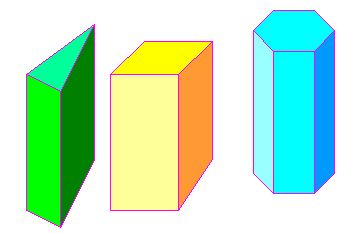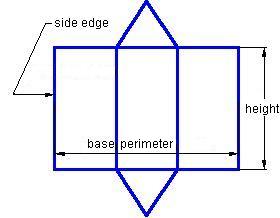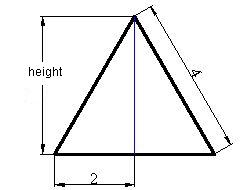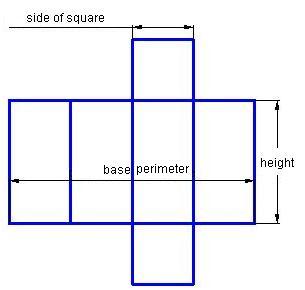AREAS OF REGULAR PRISMS
In 15(3), we studied the plane development of regular prisms:

Remember that regular prisms are those geometric shapes which are limited by two parallel and equal polygons we call bases. Its side faces are rectangles and their number is equal to the number of the sides found in their bases.
The development of a regular regular prism with a triangle base is:

The side area is equal to the base perimeter (the sum of the measurements of the 3 sides of the triangle), which will be the base of the rectangle by the height of the prism or side edge.
We will call the perimeter P, we will call the height h

The total area is equal to side area plus the area of the 2 bases, which are 2 equal equilateral triangles.

15(4).6 What is the total surface of a prism with a triangle base of 4 cm. on each side and a height of 10 cm?
Answer: 
Solution
We calculate the side area:

We calculate the area of an equilateral triangle with 4 cm., on its sides:

We calculate the height of the triangle (one leg) using the Pythagorean theorem:

The area of the base will be:

The total area will be:

15(4).7 What is the total surface of a prism with a triangle base of 6 cm. per side and a height of 12 cm?
Answer: 
The development of a regular prism with a square base is:

The side area is equal to the base perimeter (the sum of the measurements of the 4 sides of the square) times the height of the prism or edge side.
We will call the perimeter P, we will call the height h

The total area equals the side area plus the area of the two bases, which are 2 squares.

15(4).8 Calculate the total area of a prism with square base whose side equals 2 cm. The height of this prism is 5 cm.
Answer: 